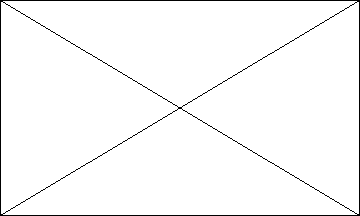2.1.2. FUNDAMENTAL STEPS IN
DIGITAL IMAGE PROCESSING
Image Acquisition
Knowledge Base
Object Recognition
Representation &Description
Segmentation
Morphological processing
Compression
Wavelets and
Multi-resolution processing
Color image
Processing
Image Restoration
Image Enhancement




Figure 2.1: Fundamental steps in digital image
processing.[3]
It is helpful to divide the material covered in image
processing into the two broad
categories methods whose inputs and outputs are images, and
methods whose inputs may be images, but whose outputs are attributing extracted
from those images. This organization is summarized in fig.2.1 above.
The diagram does not imply that every process an applied to an
image, but the intension is to convey an idea of all the methodologies that can
be applied to images for different purposes and possibly with different
objectives.
The discussion of this section is as follow:
1. Image acquisition: note that acquisition
could be as simple as being given an image that is already in digital form.
Generally, image acquisition stage involves pre-processing such as scaling.
2. Image enhancement: is among the simplest
and most appealing areas of digital image processing. Basically, the idea
behind enhancement techniques is to bring out detail that is obscured, or
simply to highlight certain features of interest in an image. A familiar
example of enhancement is when we increase the contrast of an image because
«it looks better».
3. Image restoration: is an area that also
deals with improving the appearance of an image. However, unlike enhancement,
which is subjective, image restoration is objective, in the sense that
restoration techniques tend to be based on mathematical or probabilistic models
of image degradation. Enhancement, on the other hand, is based on human
subjective preferences regarding what constitutes a «good»
enhancement result.
4. Colour image processing: is an area that
has been gaining in importance because of the significant increase in the use
of digital images over the Internet.
5. Wavelets: are the foundations for
representing images in various degrees of resolution (approving). In
particular, this material is used for image data compression and for pyramidal
representation, in which images are subdivided successively into smaller
regions.
6. Compression: as the name implies, deals
with techniques for reducing the storage required saving an image, or the
bandwidth required transmitting it. Image compression is familiar (perhaps in
advertently) to most users of computers in the form of image file extension,
such as the jpg file extension used in JPEG image compression standard.
7. Morphological processing: deals with tools
for extracting image components that are useful in the representation and
description of shape. The material in this processing begins a transition from
processes that output images to processes that output image attributes.
8. Representation and description: almost
always follow the output of a segmentation stage, which usually is raw pixels
data, constituting either the boundary of a region (i.e. the set of pixels
separating one image region from another) or all the points in the region
itself. In either case, converting the data to a form suitable for computer
processing is necessary. The first decision that must be made is whether the
data should be represented as a boundary or as s complete region.
Boundary representation is appropriate when the focus is on
external shape characteristics, such as corners, and inflection. Choosing a
representation is only part of the solution for transforming raw data into a
form suitable for subsequent computer processing.
Description, also called feature selection, deals with
extracting attributes that result in some quantitative information of interest
or are basic for differentiating one class of objects from another.
9. Recognition: is the process that assigns a
label to an object based on its description. So far we have said nothing about
the need for prior knowledge or about the interaction between the knowledge
base and the processing modules in fig.2.1.
Knowledge about a problem domain is coded into an image
processing system in the form of a knowledge database. This
knowledge may be as simple as detailing regions of images where the information
of interest is known to be located, thus limiting the search that has to be
conducted in seeking that information. The knowledge base also can be quite
complex, such as an interrelated list of all major possible defects in a
materials inspection problem or an image database containing high-resolution
satellite images of a region in connection with change-detection
applications.
In addition to guiding the operation of each processing
module, the knowledge base also controls the interaction between modules.
This distinction is made in fig.2.1 by the use of
double-headed arrows between the processing modules and the knowledge base, as
opposed to single-headed arrows linking the processing modules.
| 

